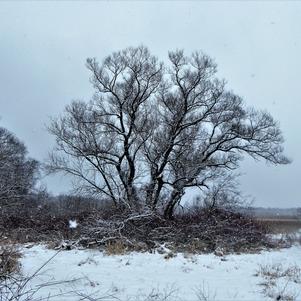General Description
Bloom Description: Despite the common name, marsh marigold is not related to nor resembles marigolds. Instead, the yellow flowers look very similar to a large buttercup. This plant blooms in early spring.
Growth Habit & Shape: Forms tidy clumps.
Soil Preferences: Prefers rich, hydric soils. Often on the margins of wet areas.
Root Description: Rhizomatous
Garden Uses: Pond edge, rain garden, wet woodland garden, streamside garden. If in part shade it can act like a groundcover for most of the growing season.
Best Management & Maintenance: Leave stems after flowering to allow for gorgeous, spiky seed heads to form in the late spring/early summer. Larger clumps can be divided in the fall as desired. Cut back seedheads to prevent seedling around.
Common Problems: No serious problems, can get rust or powdery mildew.
Benefits
Ornamental Value: Deer resistant, attractive foliage, and beautiful early blooms. Attractive, spiky seed heads after bloom.
Wildlife Benefits: Important source of pollen and nectar for small and medium sized bees and ants. The pollen is especially prized by syrphid flies. Also known to attract hummingbirds. Seeds are eaten by small mammals and ducks.
Other Practical/Environmental Benefits: Stabilizes pond and stream edges.
Use in place of: Lesser celandine and yellow iris
Ecology
Habitat:
Per the USDA, marsh marigold is a plant of wet places such as marshes, fens, ditches, wet woods, swamps. Indeed, the Latin species epithet, "palustris" refers to "swampy, marshy, or of wet places". Marsh marigold prefers full sun to light shade.
Response to Disturbance: Can be easily transplanted or divided. Marsh marigold can also withstand spring flooding. Does not do well in drought conditions.
Native State Distributions:
Canada: AB, BC, LB, MB, NB, NF, NS, NT, NU, ON, PE, QC, SK, YT
USA: AK, CA, CT, DE, IA, IL, IN, KY, MA, MD, ME, MI, MN, MO, MT, NC, ND, NE, NH, NJ, NY, OH, OR, PA, RI, SD, TN, VA, VT, WI, WV
Wetland indicator status: OBL
References
Return to Top
